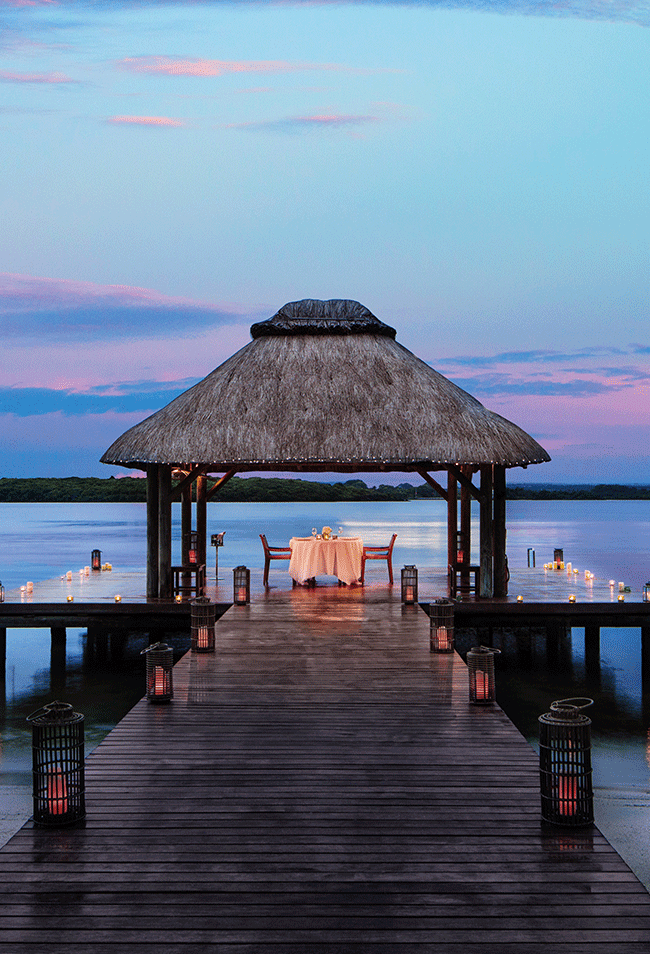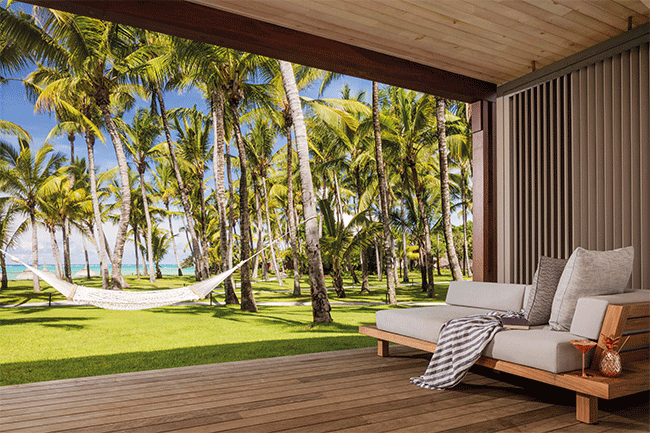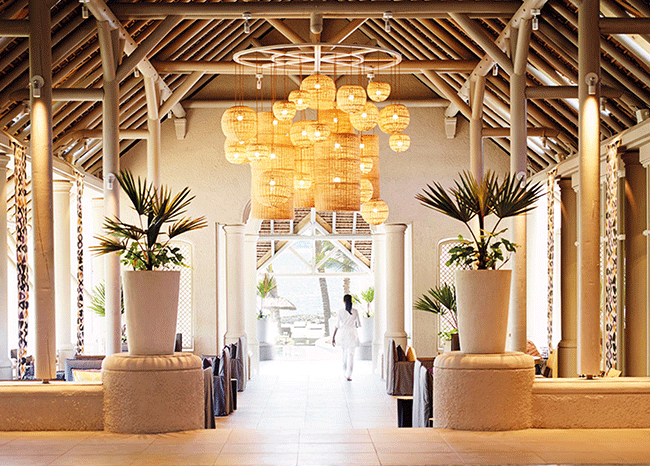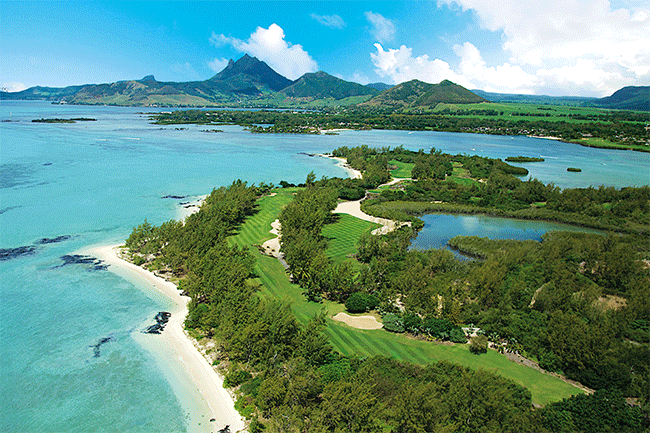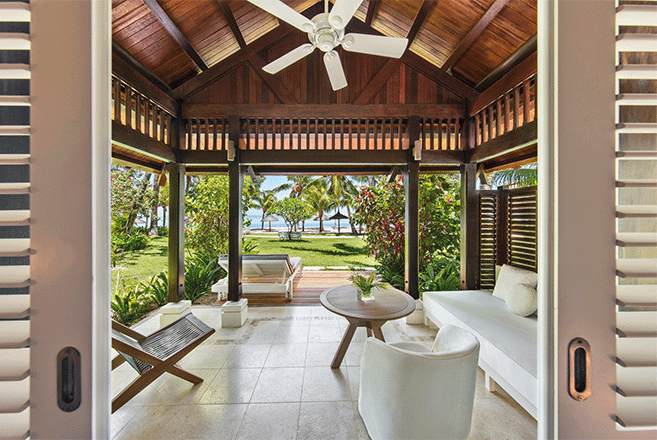If you were to swim to Mauritius from Durban it would take you 840 hours, or 35 days, more or less. The four-hour flight is, perhaps predictably, more popular. But swim or fly, the 3 500 km trip is well worth the effort. Once uninhabited, today Mauritius is a rainbow mix of cultures, religions and languages. Portuguese explorers visited in the early 16th century, but didn’t stick around. It was the Dutch who first tried to settle, taking possession from 1598 to 1710. Their efforts were doomed though, and they abandoned the island, leaving it to swashbuckling pirates.
Just more than a decade later, the French arrived. They brought with them slaves from Africa and turned over vast areas to cane. And then, in 1810, the British captured the island. But unlike other British colonies, the customs, laws and language remained French. Slavery ended in 1835, so the British turned to indentured labourers, mainly from India.
You’re likely not coming here for the history, but it is the bedrock of the multicultural diversity of the island. In Port Louis, there is the Natural History Museum – learn about the dodo, driven to extinction in 1681 – and the Blue Penny Museum – with its famous old stamps – as well as the Aapravasi Ghat, the immigration depot for about half a million labourers. It is a Unesco World Heritage Site that traces the Indian ancestry of the island.
Just as the many cultural influences have built a lively, unique people, with their own Creole language and cuisine, so the many religions do more than exist side by side. It is a place of religious syncretism, of peaceful co-existence and even shared worshipping.
Every February, during the Hindu festival of Mana Shivaratri, about 500 000 pilgrims journey to Grand Bassin, a mountain lake also known as Ganga Talao (Lake of Ganges). The oldest and most prominent temple at Grand Bassin is Kashi Vishwanath Mandir. Another major temple here is the Mauritiuswarnath Mandir, which is dedicated to Shiva. There is, too, the temple of Maheswarnath Mandir in Triolet; the Jummah Mosque, the grand mosque of Port Louis; and the Kwan Tee Pagoda, also in the capital city, among many others.
A pretty visit is to Sri Siva Subramanya Thirukovil on the Corps de Garde Mountain, built by a labourer called Velamurugan in 1907. It is dedicated to Lord Murugan, the Hindu god of war. In the small fishing village of Cap Malheureux on the northern tip, the little red-roofed Catholic church of Notre Dame Auxiliatrice has a holy-water font made of a giant clamshell.
As is only to be expected with such a cultural stew, food is Mauritian gold. The traditional and the trendy fuse to create variety and intrigue. The One&Only Le Saint Géran has relaunched its pop-up restaurant at Prime, showcasing celebrity chef cuisine. Pencil in October… From then until March 2023, three-Michelin-starred French chef Anne-Sophie Pic will be on site. Prime touts itself as an elegant steakhouse, but there’s much more there – the seafood and tasting menus are legendary.
The hotel itself has a Forbes five-star travel rating. Set in 24 ha amid tropical gardens on a secluded, sheltered peninsula, it is private and expansive. The grande dame of Mauritian resorts, its colonial-style architecture has shaken off the past with an understated contemporary look and feel. It’s in the north-east, on the northern tip of the Belle Mare coastline.
For casual dining, the Beach House in Grand Baie is good for lunch, sundowners and dinner, with a fabulous view on to the beach and bay. There are also now live music and DJs to put a swing in the evening.
Château Mon Désir at Maritim Resort and Spa is the island’s go-to high-class fine-dining establishment set on an historical estate. Expect international cuisine, with a focus on French and the Indian Ocean. The traditional is on the menu – think lobster bisque – as well as the contemporary (smoked marlin and salmon roulade, capon rolled in kadaif).
As is to be expected, there is a strong focus on seafood. But Coolen Chez Ram, an institution on the island, expands this to include north Indian curries and local Creole dishes such as cari d’ourite, or octopus curry. It is in Grand Baie and booking is advised – it is wildly popular. The other Grand Baie institution, La Rougaille Créole, also has a menu replete with local Mauritian food. There is, for example, its famed rougaille with octopus, calamari, prawn or red snapper. Rougaille, of course, is the classic Mauritian tomato-based dish. The recipe is passed down through the generations, and families have their own secret permutations and spice variations. Garlic, ginger, thyme, chilli, coriander and curry leaves are the base.
Food is a good way to understand the nuances of a culture. Another is to explore the lesser-known areas of the island. Unlike many Indian Ocean islands, Mauritius is not flat – and you may want to pack your hiking shoes to conquer its beautiful interior mountains. The highest point at 828m is Piton de la Petite Rivière Noire in the south-west. Book a guide to get the most out of the peak and the Black River Gorges National Park. It is the largest protected forest on the island and offers more than 50 km of challenging hiking trails. Keep an eye out for the endemic animals and birds: Mauritian flying fox, Mauritius kestrel, pink pigeon, Mauritius parakeet, Mauritius cuckooshrike, Mauritius bulbul, Mauritius olive white-eye, Mauritius grey white-eye and Mauritius fody.
The mountains of Le Pouce and Pieter Both – in the centre of Mauritius – are also popular, with a completely different climate and environment from that of the coast. The climbing usually starts from St Pierre. Again, a guide is recommended. Yet rising above them all in terms of popularity is Le Morne, a World Heritage Site on the south coast, with sensational views from the summit.
It was once a retreat for enslaved people and is a symbol of their fight for freedom. There is an International Slave Route Monument at the foot, and the 6.5 km hike takes three to four hours. En route, stop off at the much-visited, entirely unworldly Chamarel 7 Coloured Earth Geopark. The oxidation of minerals in the soil has produced dunes of seven colours and is as astonishing in real life as it is in pictures.
Popular though adventuring is on the island, less strenuous forms of exercise still rule. Golf is huge and there is a wide selection of courses – Heritage (in Bel Ombre in the south), Mont Choisy Le Golf (near Trou aux Biches in the north) and Anahita Golf Club (in Beau Champ in the east), and that’s just for starters. The Belle Mare Links and Legends courses are interesting and lovely, but shorter. The Ile Aux Cerfs Golf Club is unique as you get to it by boat.
Less strenuous still is the sport of kings and Mauritius’ horse-racing pedigree goes back centuries. In Port Louis, the capital, make the time to catch events at the Champ de Mars Racecourse; the Mauritius Turf Club is the oldest in the southern hemisphere and, on race day – the season runs from April until the end of November – the atmosphere is electric, a coming together of almost every sector of society, united in a national obsession.
Mauritius is famed for its resorts and while many of them suffered through the COVID catastrophe, most are now open and offering excellent specials and rates.
Anantara Iko at Le Chaland Beach on the south-eastern coast has spacious, edgy, contemporary suites, as well as a hugely popular traditional hammam spa (almost every Mauritian hotel of any size has a spa, it is a national speciality). The six restaurants serve up Indian, Chinese, French and Creole dishes. This, too, is typical. Less common are the onsite cooking lessons; learn to craft Creole dishes at Spice Spoons, its interactive cooking school.
Entirely different is Salt of Palmar in the north-east. The hotel’s approach – fresh, contemporary, good value, ultra-sophisticated – have been noted across the island and is shaking things up. It’s an adult-only boutique hotel, very uncommon, as is the design-forward emphasis of French designer Camille Walala, who mixed up large-scale, bold colours with a streamlined approach.
More traditional are the four Lux* hotels on the island, each with its own essence. Echoing Salt’s approach, Lux* Grand Baie is a modernist space designed by Brit Kelly Hoppen, who chose a muted palette of dreamy creams and sands, accented with dramatic splashes of audacious colour. It has a chic and elegant feel. Lux* Belle Mare on the east coast has a more family feel, but is no less refined.
And then for something utterly different, the Bubble Lodge near Bois Cheri is a joy. Bubble lodges have attracted a new, younger market to Mauritius. At Bois Cheri, suites are immersed in the forest, those extraordinary transparent bubbles open to all the green goodness of the surroundings. There is minimal impact on the environment in these unique escape pods. Bubble Lodge Île aux Cerfs is just as fascinating, but this time with the added bonus of a private beach. Comfortable and spacious, the suites have a lounge area, bedroom and bathroom, as well as a sofa bed for children. And there is a butler service and complimentary green fees for the Île aux Cerfs Golf Club, the course designed by Bernhard Langer.
Mauritius, ultimately, is what you make of it. In one of the resorts you could be anywhere on Earth, but out in the villages, on the trails, at the races, up the mountains and in the parks of the interior, you could only be in Mauritius. It’s a striking island, as complex as it is gratifying, variation its raison d’être. Plan for the unexpected and enjoy the rewards.

